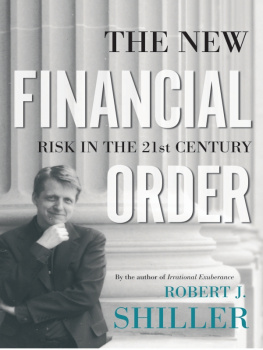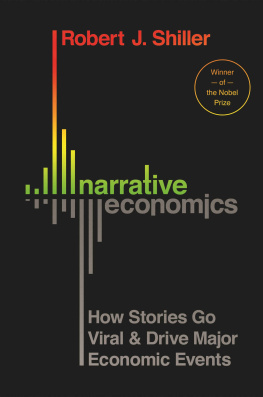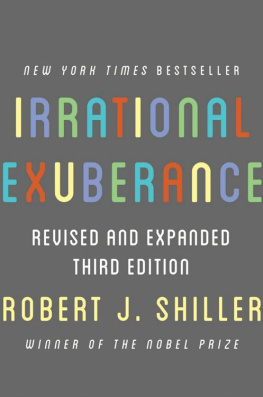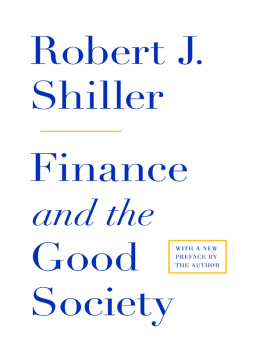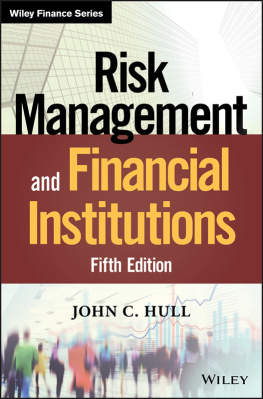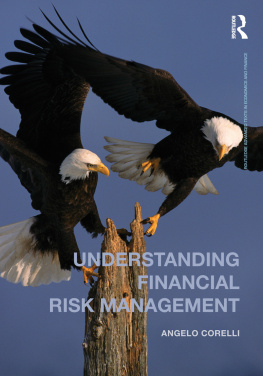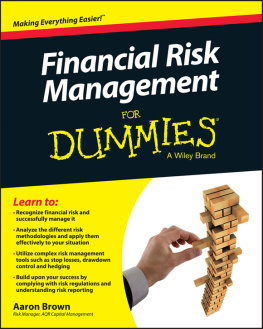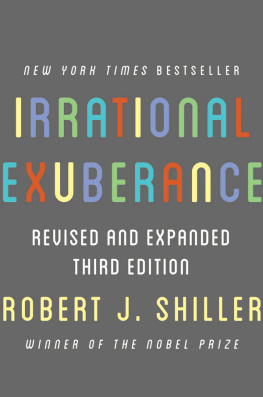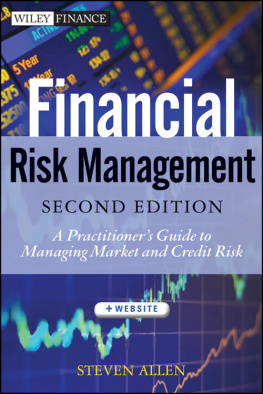The New Financial Order
The New Financial Order
RISK IN THE 21ST CENTURY
Robert J. Shiller
Princeton University Press - PRINCETON AND OXFORD
Copyright 2003 by Robert J. Shiller
Published by Princeton University Press 41 William Street
Princeton, New Jersey 08540
In the United Kingdom:
Princeton University Press
3 Market Place
Woodstock, Oxfordshire OX20 1SY
All Rights Reserved
Library of Congress Cataloging-in-Publication Data
Shiller, Robert J.
The new financial order : risk in the 21st century /
Robert J. Shiller.
p. cm.
Includes bibliographical references and index.
eISBN: 978-1-40082-547-9
1. Risk management. 2. Information technology. I. Title.
HD61 .S55 2003
368dc21 2002042563
British Library Cataloging-in-Publication Data is available
Book design by Dean Bornstein
This book has been composed in Adobe Galliard and Formata
by Princeton Editorial Associates, Inc., Scottsdale, Arizona
Printed on acid-free paper.
www.pupress.princeton.edu
Printed in the United States of America
10 9 8 7 6 5 4 3 2 1
I returned, and saw under the sun, that the race is not to the swift, nor the battle to the strong, neither yet bread to the wise, nor yet riches to men of understanding, nor yet favor to men of skill; but time and chance happeneth to them all.
Ecclesiastes 9:11
Contents
Preface
Economic gains achieved through technological progress do not themselves guarantee that more people will lead good lives. Just as enormous economic insecurity and income inequality pervade the world today, worsening conditions can develop even as technological advances mark greater levels of economic achievement. But new risk management ideas can enable us to manage a vast array of risksthose present and future, near and farand to limit the downside effects of capitalisms creative destruction. Application of these ideas will not only help reduce downside risks, but it will also permit more positive risk-taking behavior, thereby engendering a more varied and ultimately more inspiring world.
The New Financial Order proposes a radically new risk management infrastructure to help secure the wealth of nations: to preserve the billions of minorand not so minoreconomic gains that sustain people around the world. Most of these gains seldom make the news or even evoke much public discussion, but they can enrich hard-won economic security and without them any semblance of progress is lost. By radically changing our basic institutions and approach to management of all these risks both large and small we can do far more to improve our lives and our society than through piecemeal tinkering.
Just as modern systems of insurance protect people against catastrophic risks in their lives, this new infrastructure would utilize financial inventions that protect people against systemic risks: from job loss because of changing technologies to threats to home and community because of changing economic conditions.
If successfully implemented, this newly proposed financial infrastructure would enable people to pursue their dreams with greater confidence than they can under existing modes of risk management. Without such a means to greater security, it will be difficult for young people, whose ideas and skills represent the raw materials for a growth-oriented information society, to take the risks necessary to convert their intellectual energies into useful goods and services for society.
Historically, economic thinkers have been limited by the state of relevant risk management principles of their day. Recent advances in financial theory, information technology, and the science of psychology allow us to design new inventions for managing the technological and economic risks inherent in capitalisminventions that could not have been envisioned by past thinkers. Karl Marx, the instigator of the communist movement, had no command of such risk management ideas when he published Das Kapital in 1867. Nor did John Maynard Keynes, the principal expositor of modern liberal economic policy, when he published the General Theory of Employment, Interest and Money in 1936. Nor did Milton Friedman, the chief expositor of economic libertarianism, when he published Capitalism and Freedom in 1962.
Ultimately, The New Financial Order is about applying risk management technology to the major problems of our lives. That is, it depicts an electronically integrated risk management culture designed to work in tandem with the already existing economic institutions of capitalism to promote wealth. The book does not promise utopia, nor is it a solution to all of our problems. It is not motivated by any political ideology, nor by sympathies with one or another social class. It does of-fer steps we can realistically take to make our lives much better. By presenting new ideas about basic risk management technology, this book does not propose a finished blueprint for the future. Instead, it describes a new direction that will inevitably be improved by future experimentation, innovation, and new advances in financial theory, in the manipulation of relevant risk-related information, and in the ability of social scientists to draw on psychology to design user-friendly techniques to help people manage income-related risks.
I began working on this book in 1997 as a culmination of years of thinking and writing about how to improve institutions for dealing with risks, both to individuals and to society. In 1993 I published a technical monograph, Macro Markets: Creating Institutions for Managing SocietysLargest Economic Risks, accompanied by a series of scholarly articles on the general topic of risk management with Allan Weiss, Karl Case, Stefano Athanasoulis, and others. But these pieces neither drew the big picture nor addressed the big issues that I thought needed to be stressed to a broad audience.
At that time I had planned to use this book to integrate my thinking about risk management into a broader picture of our society and economy. I had hoped to correct the egregious public misunderstanding of technological and economic risks, and convey a clearer, more accurate picture of the actual risks people face. Also, I had hoped to explain how the presence of various forms of risk, many hidden in plain sight, prevent us from achieving our highest potential.
But I was interrupted in 1999 by the increasingly impressive evidence of an enormous boom in the stock market, a boom that proved of historic proportions. On the advice of my fellow economist and life-long friend Jeremy Siegel, I decided to set aside the work on this book to write a book about the stock market booma classic example of the very kind of misperception and mismanagement of long-term risks that I had written about in the scholarly literature. With the help of Princeton University Press, I managed to get Irrational Exuberance into bookstores in mid-March 2000, precisely at the peak of the market and of the tech bubble.
Irrational Exuberance concluded by saying that not only was the level of the stock market exaggerated but societys attention to the stock market, and the importance we attach to it, were also exaggerated. The stock market will not make us all rich, nor will it solve our economic problems. It is foolhardy for citizens to pay attention to the world of business only for the purpose of picking stocks, and even more foolhardy to think stock prices will go nowhere but up.
The New Financial Order picks up where my earlier research and Irrational Exuberance together leave off. By showing how we mis-construe risk and by bringing significant new ideas to bear on this problem, I hope to explain how we can fundamentally resolve the economic risk predicament. We are indeed entering a new economic era, robust stock market or not, and we need to think about the implications of emerging technologiesthe real drivers of global economic changenot just on individual companies and their stock prices but on all of us. We need to understand how the technology of the past has shaped our institutions. And we need to change our thinking in a vigorous, creative way to navigate this new environment.
Next page
